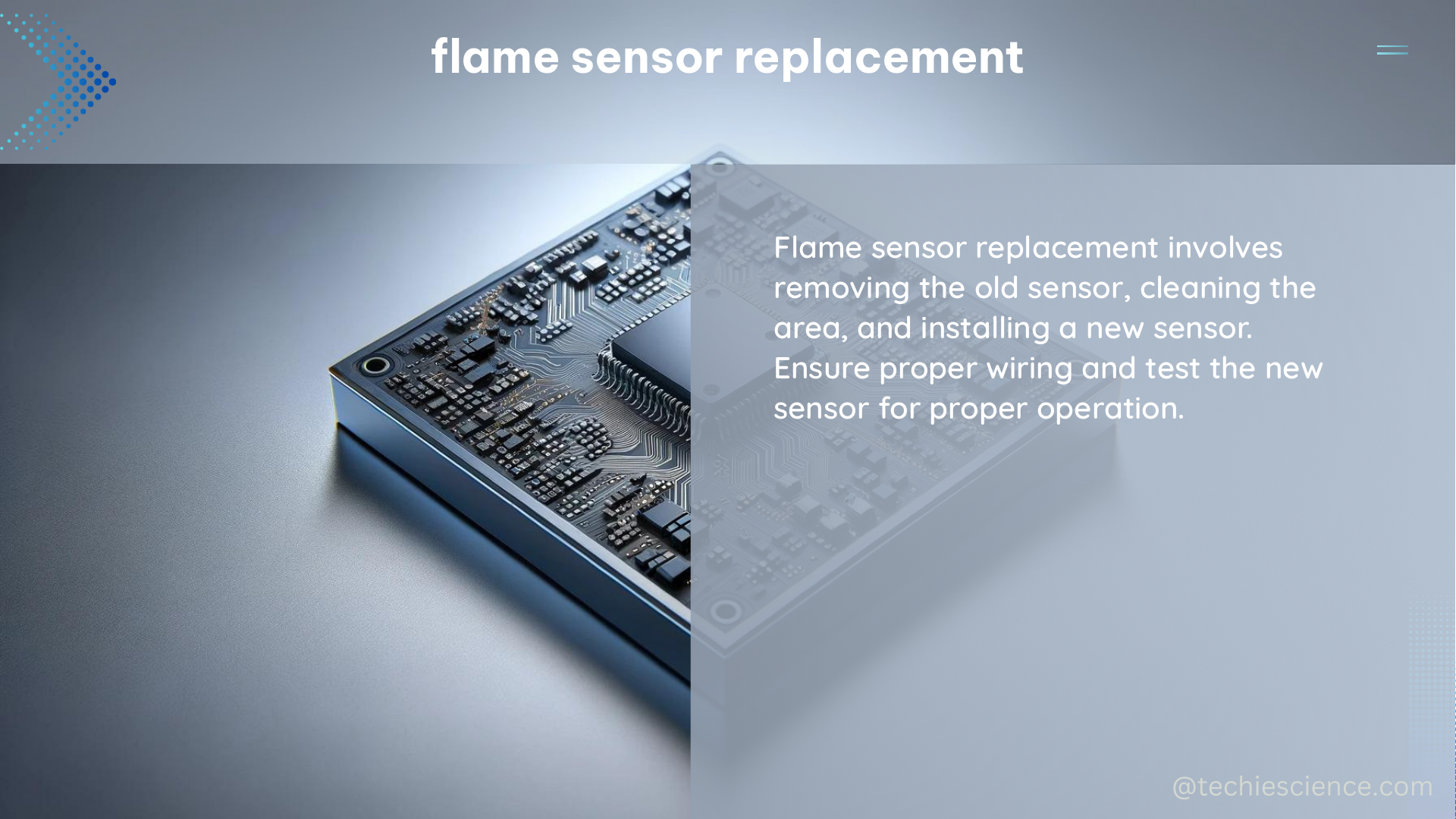Flame sensors are critical components in gas heating systems, responsible for detecting the presence of a flame and ensuring safe operation. These sensors typically use flame rectification, a method that relies on the asymmetric conduction properties of a flame to distinguish between shorted, open, or resistive conduction. This comprehensive guide will provide you with the technical details and step-by-step instructions to successfully replace a flame sensor in your home heating system.
Understanding Flame Sensors and Their Role
Flame sensors are designed to detect the presence of a flame in a gas-fired heating system, such as a furnace, boiler, or water heater. They work by using the principle of flame rectification, which takes advantage of the asymmetric conduction properties of a flame. When a flame is present, the sensor can detect a small current flow, typically in the range of 3-5 microamps (μA). This current flow is used by the system’s control board to confirm the presence of a flame and allow the gas valve to remain open, ensuring safe operation.
Diagnosing Flame Sensor Issues

When troubleshooting a flame sensor, the first step is to measure the microamp (μA) current flow. This can be done using a multimeter set to the microamp (μA) scale. A healthy flame sensor should exhibit a current flow of around 3-5 μA when the burner is lit. If the current flow is significantly lower or non-existent, it may indicate a problem with the sensor.
To set up a bench test for measuring the flame sensor’s microamp current, you’ll need the following:
- A household 120V power source (such as a wall outlet)
- A Coleman camping burner or similar gas burner
- The flame sensor you’re testing
Here’s how to set up the bench test:
- Connect the flame sensor to the 120V power source using a multimeter set to the microamp (μA) scale in series with the sensor.
- Ignite the gas burner and position the flame sensor so that it’s exposed to the flame.
- Observe the microamp (μA) reading on the multimeter. A healthy flame sensor should display a current flow of around 3-5 μA.
If the sensor is not producing the expected current flow, it may need to be cleaned or replaced.
Cleaning the Flame Sensor
In some cases, a simple cleaning of the flame sensor can resolve issues. Use a fine-grit scouring pad or emery cloth to gently clean the sensor rod, removing any buildup of soot, dust, or debris. Be careful not to damage the sensor’s surface during the cleaning process.
After cleaning the sensor, it’s also important to ensure that the burners are free from any obstructions or debris. Tighten all burner screws to ensure a secure connection, as loose or rusted screws can cause problems with the flame sensor’s operation.
Replacing the Flame Sensor
If the flame sensor is physically damaged or not functioning correctly, it will need to be replaced. When replacing a flame sensor, it’s crucial to consider the technical specifications, such as the sensor’s type, dimensions, and compatibility with your specific heating system.
Always follow the manufacturer’s recommendations and local codes when replacing safety-critical components like flame sensors. Ensure that the replacement sensor is a direct match for your existing unit, as using an incompatible sensor can lead to safety issues or improper system operation.
Here are the general steps to replace a flame sensor:
- Shut off the power and gas supply to the heating system.
- Locate the flame sensor, typically mounted near the burners.
- Disconnect the wiring harness or electrical connections from the sensor.
- Remove the mounting screws or clips holding the sensor in place.
- Carefully remove the old flame sensor and inspect the mounting area for any debris or damage.
- Install the new flame sensor, ensuring it is properly aligned and secured.
- Reconnect the wiring harness or electrical connections.
- Restore power and gas supply to the system.
- Test the new flame sensor’s operation by lighting the burners and verifying the microamp (μA) current flow.
Remember to always follow the manufacturer’s instructions and local codes when replacing a flame sensor. Improper installation or the use of an incompatible sensor can lead to safety hazards or system malfunctions.
Conclusion
Flame sensors are critical safety components in gas heating systems, and understanding their role and proper replacement is essential for maintaining the safe and efficient operation of your home’s heating equipment. By following the detailed instructions and technical guidance provided in this comprehensive guide, you can confidently diagnose and replace a flame sensor as part of your DIY home maintenance routine.
References:
- Replacement Flame Sensor Help Needed
- How Can I Bench Test a Flame Sensor (Flame Rectification)?
- Rheem Furnace – Replaced Flame Sensor & Burners, Still Go Out 4-10 Secs
- Checking Micro Amps on Flame Sensor
- Testing Flame Rectification

The lambdageeks.com Core SME Team is a group of experienced subject matter experts from diverse scientific and technical fields including Physics, Chemistry, Technology,Electronics & Electrical Engineering, Automotive, Mechanical Engineering. Our team collaborates to create high-quality, well-researched articles on a wide range of science and technology topics for the lambdageeks.com website.
All Our Senior SME are having more than 7 Years of experience in the respective fields . They are either Working Industry Professionals or assocaited With different Universities. Refer Our Authors Page to get to know About our Core SMEs.